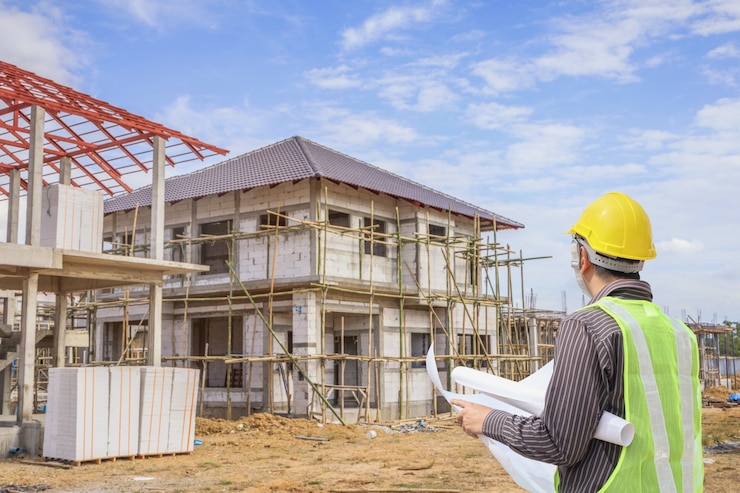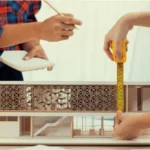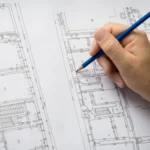In today’s construction landscape, good looks aren’t enough. Neither is brute strength. The real mark of a successful building lies in its ability to do both, stand tall for decades while looking just as impressive in year twenty as it did on day one.
This balance between design and durability is no longer a bonus feature. The majority of respectable builders use it as a standard. The problem is the same whether you’re building a high-traffic hospitality area, a business complex, or a luxury home: how to make it both aesthetically pleasing and long-lasting?
Without compromising either, let’s examine how the most forward-thinking construction company of today are balancing style and structure.
Why Design And Durability Shouldn’t Be A Trade-Off
There was a time when buildings were either beautiful or long-lasting, not both. But that line has blurred now.
Nowadays, commercial construction involves more than just constructing useful structures. The goal is to create experiences. And durability isn’t just about strength. It’s about materials that weather well, systems that last, and spaces that remain relevant for decades.
Take, for example, exposed steel trusses or timber beams. These aren’t just load-bearing elements. They double as aesthetic statements. When materials do more than one job, projects become smarter, leaner, and far more elegant.
Integrated Design Is the New Standard
Using integrated design from the start is one of the best methods to combine form and function. This entails collaboration between builders, engineers, and architects from the very beginning of the project.
Here’s why that works:
- It prevents design conflicts later in the project
- It improves structural alignment, making sure what looks good on paper is actually viable on site
- It reduces waste and rework, saving both time and budget
In fact, projects that use Building Information Modelling (BIM) or collaborative planning tools report fewer delays and cost overruns. And when every stakeholder is aligned from the start, it’s easier to strike the right balance between aesthetics and endurance.
Materials That Make A Difference
The choice of materials can essentially make or break your project in terms of durability. Let’s break this down:
- Steel that has been recycled is robust, fireproof, and environmentally friendly. Perfect for commercial builders who wish to lessen their carbon footprint without sacrificing strength, they would find it ideal.
- Despite their unusual tone, bamboo and hempcrete are becoming more and more popular. In addition to being renewable, they thrive in hot, cold, and even highly damp conditions.
- White concrete? Yes, it is aesthetically beautiful. However, in order to maintain its allure without compromising structure, it also requires a particular combination and upkeep schedule.
Choosing materials should be a blend of science and intuition. You want products that fit your environment, budget, and design vision. That’s where an experienced residential and commercial construction company truly shines. They know which materials will still look and feel premium after 20 years.
Structural Honesty Is Underrated
We’re moving past the era of hiding beams and supports behind layers of plasterboard. In fact, more projects today celebrate their structural bones.
Think:
- High ceilings with visible steel grids
- Timber trusses left uncovered in boutique resorts
- Façades that serve as both skin and skeleton
The message is simple. Don’t hide the strength. Embrace it. Let it become part of your story.
Tech Is Leading The Way
Technology is eliminating uncertainty in construction through real-time simulation tools and AI-based modelling.
Integrated platforms allow you to:
- Evaluate the impact of weather on façade systems.
- Estimate the wear and failure points of materials.
- Modify plans as needed to increase resilience.
You can use these technologies for more than just improving building design. They aid in building more intelligently. And that’s a game-changer for commercial builders who are concerned about their bottom line.
Beyond Bricks: The Financial Case
Let’s address the elephant in the room – cost.
Yes, materials like bamboo composites or phase-changing walls can be pricey upfront. But zoom out, and the picture changes.
Durable materials and smarter systems:
- Reduce maintenance costs
- Minimise energy bills
- Extend the lifespan of assets
Challenges That Are They’re Solvable
Of course, blending design and durability isn’t always easy, even for experienced professionals. You’ll face:
- Budget constraints
- Conflicting opinions between creative and technical teams
- Site limitations like poor soil or extreme weather
But here’s the trick used by top builders in Mohali: plan early, collaborate deeply, and always test before you build.
Digital prototyping, material trials, and life cycle assessments can help you make informed decisions. And when things go wrong (because sometimes they do), you’ll be in a much better place to fix them.
The Future Looks Durable & Beautiful
As the construction landscape evolves, so do client expectations. They want buildings that reflect their brand, reduce operational costs, and support sustainability goals. In other words. They want it all.
And why not?
We’re already seeing it happen:
- Hotels with green roofs that double as guest lounges
- Office buildings with exposed thermal mass walls that regulate indoor temperature
- Residential homes built using prefabricated modules that are sleek, strong, and efficient
So, being a reputable construction company, you won’t have to just build but make sure that the palace lives, breathes, and evolves over time.
Final Thoughts
It is not necessary to choose between strength and beauty in order to balance durability and design. You only have to weave them together from the ground up. With the right mindset, tools, and builder, your next commercial or residential project can truly be built to impress – and to last.
If you’re ready to create a structure that blends aesthetic vision with rock-solid performance, talk to a trusted construction company that understands this balance at its core.
We at RS Builders have years of experience creating residential and business projects that are not only aesthetically pleasing but also fundamentally sound. Let’s construct something that will endure for many years.
FAQs
- How can integrated design tools improve the durability of construction projects?
They allow early collaboration between teams and simulate real-world scenarios, helping spot issues before construction begins. - What are the key factors influencing the durability of construction materials?
Material type, local climate, construction technique, and maintenance all play crucial roles. - How do exposed structural elements contribute to both aesthetics and sustainability in building design?
They reduce the need for additional finishes and celebrate structural honesty, saving resources and creating visual impact. - What are some practical examples of buildings that successfully blend design and durability?
Buildings like the Ribbon House and Hexalace in Mohali are great examples. - How does early collaboration between architects and engineers benefit a project?
It ensures smoother execution, reduces rework, and makes it easier to align visual goals with long-term structural integrity.





